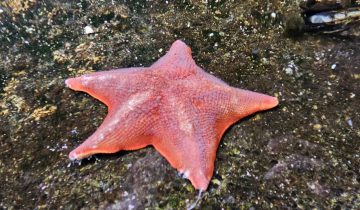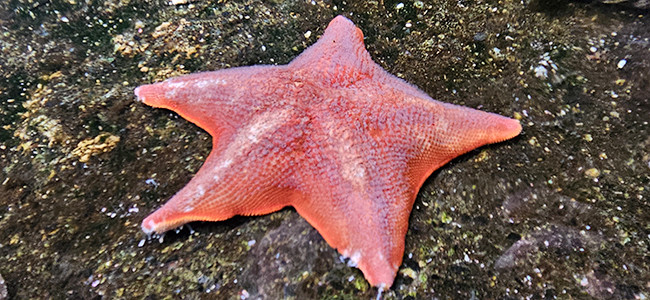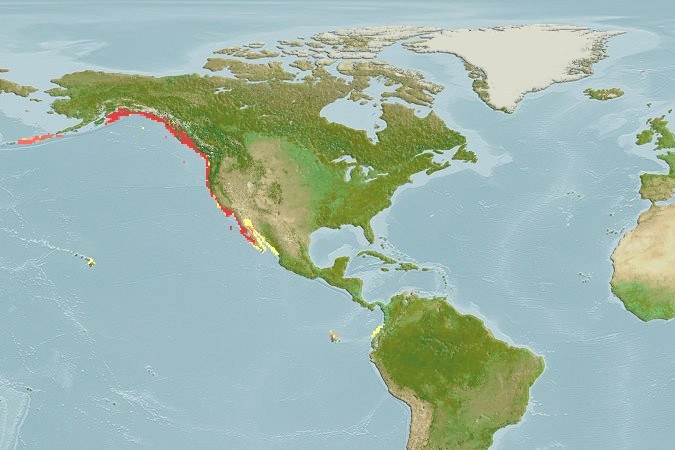Patiria miniata, commonly known as the bat star, is a species of echinoderms belonging to the family Asterinidae and the order Valvatida. The generic name, Patiria, derives from the Latin ‘patina’, referring to its dish-like shape, while the epithet miniata alludes to its reddish coloration. It is widely distributed along the Pacific coast of North America, from Sitka (Alaska) to Baja California (Mexico), and is especially abundant along the central coast of California. It inhabits intertidal and shallow subtidal zones down to depths of approximately 300 meters, on rocky and sandy substrates, as well as among seagrass beds and kelp forests.
Reaching up to 20 cm in diameter, Patiria miniata has a body with five short arms connected by a thick membrane, giving it its characteristic bat-like appearance. Although it typically has five arms, individuals with four to nine arms are not uncommon. Its aboral surface is covered with flattened plate-like ossicles, giving it a rough texture similar to sandpaper. Coloration is highly variable: it can be solid or mottled in shades of red, orange, yellow, brown, green, purple, or white. Unlike similar species such as Mediaster aequalis or Dermasterias imbricata, the bat star lacks prominent marginal plates and does not secrete mucus, and its surface is not smooth, which makes field identification easier.
Patiria miniata is an opportunistic omnivore and an important detritivore in benthic ecosystems. Its diet includes algae, organic detritus, colonial tunicates, bryozoans (especially Tubulipora spp.), sponges, young sea urchins, and seagrasses such as Phyllospadix. It cannot pry open hard-shelled molluscs but feeds by everting its stomach, releasing digestive enzymes that break down the prey externally before reabsorbing the liquefied contents. It has also been observed feeding on biofilms on rocky surfaces.
The reproduction of Patiria miniata is sexual and occurs through external spawning. Both males and females release gametes into the water from pores located at the base of the arms. While it can spawn at any time of the year, reproductive peaks typically occur from late winter to spring. Fertilized eggs develop into bipinnaria planktonic larvae with notable regenerative capacity. These larvae swim freely before settling on the seafloor and metamorphosing into juvenile starfish.
In addition to its key role as a seafloor cleaner, Patiria miniata is known for its unusual ‘fighting’ behavior, in which individuals gently push each other by overlapping their arms without causing apparent harm. It has commensal relationships with the polychaete Ophiodromus pugettensis, which lives in the ambulacral grooves on its oral surface, feeding on leftover food without harming the host. This species is also a common model organism in scientific studies on embryonic development and regeneration, and is bred at institutions such as the Marine Biological Laboratory (MBL). However, it is affected by the ‘sea star wasting syndrome’, a devastating disease linked to rising ocean temperatures, which can cause rapid and massive disintegration of the animal.
Photos:


 from
from